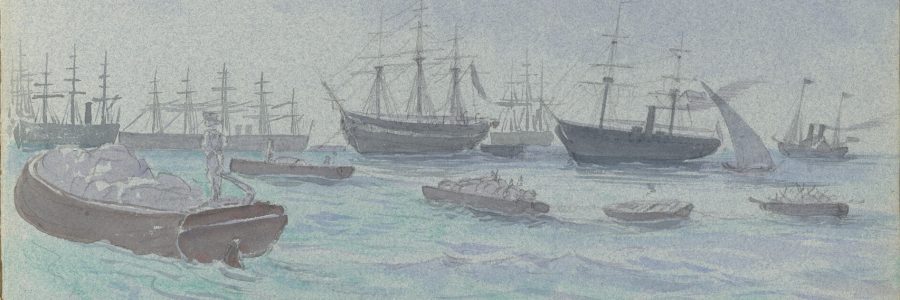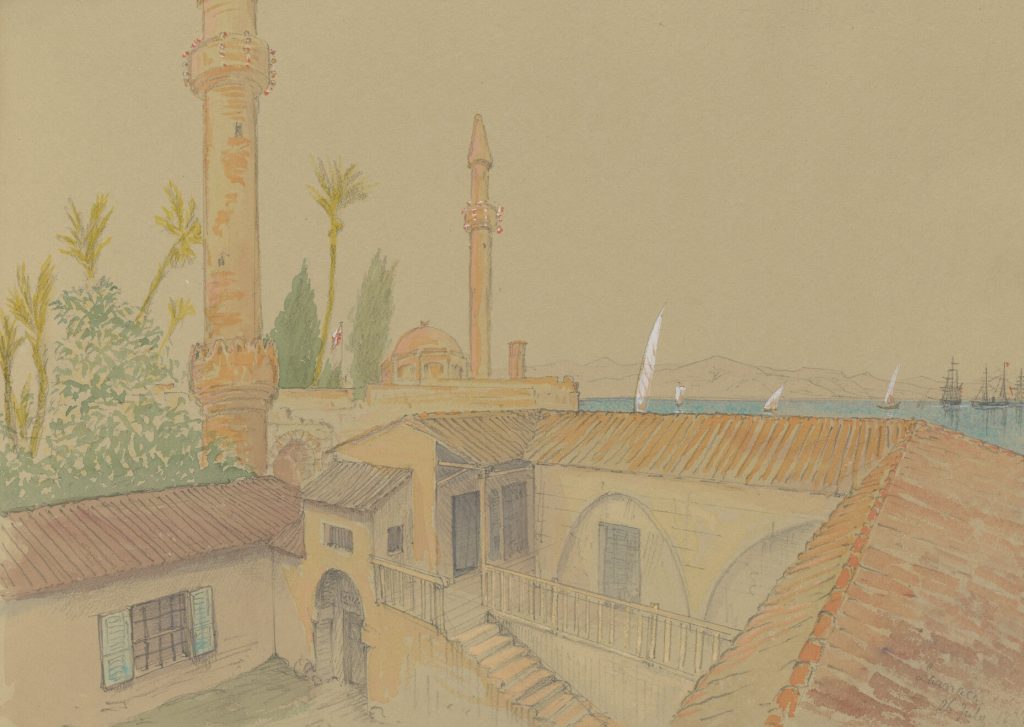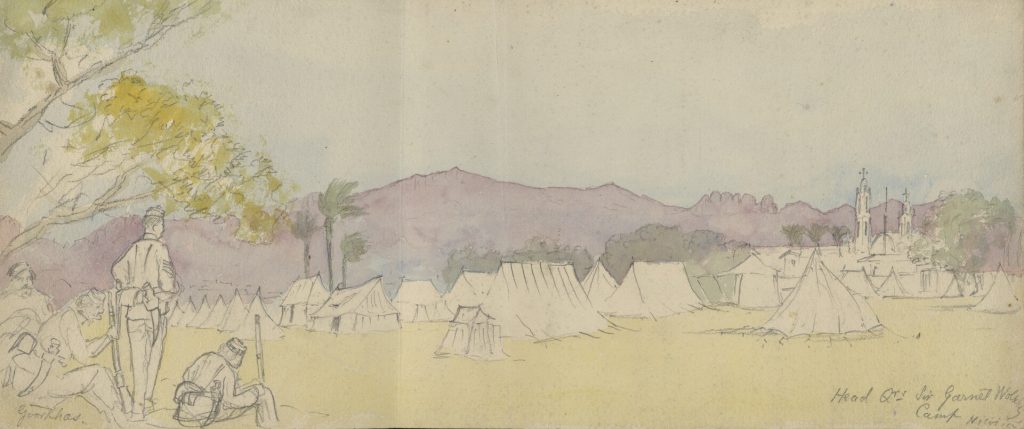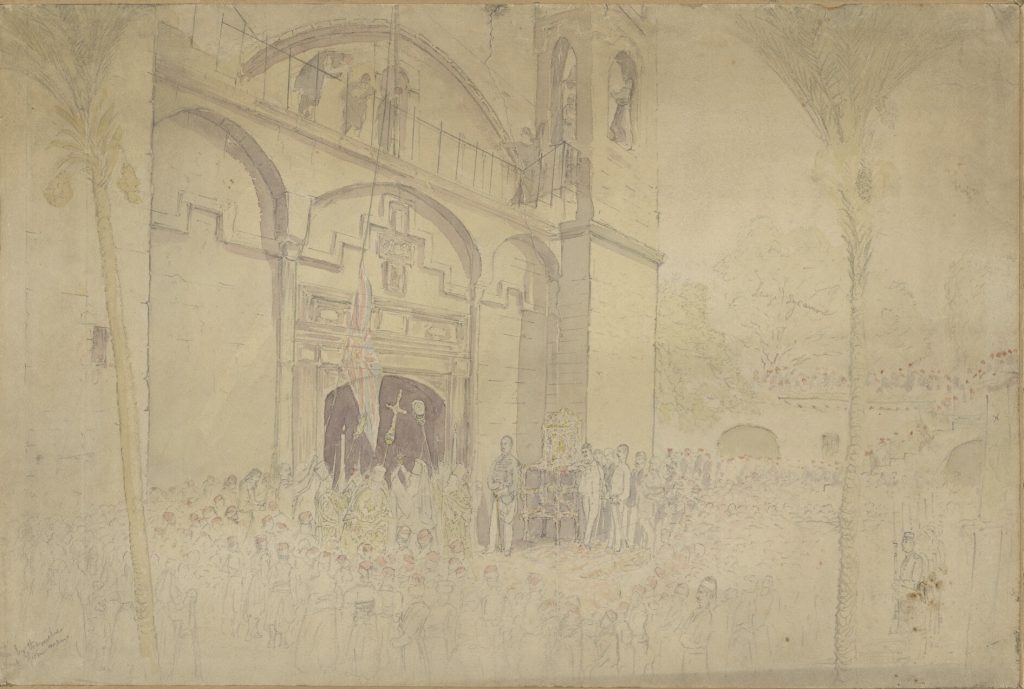
Sketches and watercolours of Cyprus now digitised
Samuel Pasfield Oliver (1838-1907), the Victorian antiquary, had a colourful life and career as a soldier, explorer, geographer, archaeologist, artist and writer. His travels took him from an Essex rectory to China, Japan, Mauritius, Madagascar, Nicaragua, Greece, Sardinia, Asia Minor, St Helena and Cyprus. Now, thanks to the generosity of Dr Robert Merrillees, a series of sketches and watercolours produced by Oliver during his time in Cyprus have been digitised and are available to browse on Cambridge Digital Library.
The art pieces form part of the Cobham Collection, an important collection of Cypriot books, pamphlets, periodicals, maps and photographs from the personal library of Claude Delaval Cobham (1842-1915). Cobham was a noted antiquarian and colonial official based in Cyprus from 1878, the point at which the island began to be administered by Britain. Today the Cobham Collection is part of the Royal Commonwealth Society (RCS) holdings at Cambridge University Library. Dr Merrillees first encountered the Cyprus sketches and watercolours when the collection was still housed at the RCS library in Northumberland Avenue, London, prior to its transfer to Cambridge in the early 1990s. Dr Merrillees’ interest in Cyprus stems from his training in Cypriot archaeology at Sydney University in the 1950s and his lifelong attachment to the island. He also joined the late Professor Nicolas Coldstream in lobbying to keep the Cobham Collection intact when there was a possibility it would be sold and dispersed.
The newly digitised collection includes six pencil and watercolour sketches prepared by Oliver while he was based in Cyprus in the summer of 1878 as special artist and correspondent for the Illustrated London News. Dr Merrillees was particularly attracted to the original drawings as they had the immediacy, spontaneity and colour that was lost in the black and white engravings done for publication in London. The sketches show the hoisting of the Union Jack in July 1878 and the British military presence on the island, marked by the arrival of Sir Garnet Wolseley, a career colonial solider, who was appointed the first High Commissioner of Cyprus. The strategically important island had previously been part of the Ottoman Empire. It is telling that Oliver’s working sketchbook, which has also been digitised, is titled ‘The British occupation of Cyprus’. Oliver’s illustrations were published in the Illustrated London News between August and September 1878 alongside articles from ‘S.P.O.’ detailing his observations.
On the 17th August 1878, Oliver wrote of his impressions of Larnaca and the British presence:
The town of Larnaca, or rather the commercial portion of it, called the Marina, stretches along the water’s edge, and presents the usual Oriental features of a Levantine seaport, except that it is more sleepy and quiet than most of those towns. The arrival of the expedition alone gives life to the place; and already one end of the town is assuming a business-like look; but the present hurry and bustle is all European; the phlegmatic Turks are as impassive and unconcerned as if it was no business of theirs. (Illustrated London News, No. 2402, p. 162)

After many years of travelling and adventure, Oliver’s health was not robust and he returned to England, settling in Sussex to write. His notable publications include: Madagascar and the Malagasy (1866) and Madagascar (1886); Nuragghi Sardi, and other Non-Historic Stone Structures of the Mediterranean (1875), following the exploration of archaeological sites in Asia Minor and Greece; On and Off Duty (1881), relating to Captain Pym’s expedition to Central America; The Second Afghan War, 1878–80 (1908), based on documents collected by Sir Charles Macgregor; and a number of contributions to the Oxford Dictionary of National Biography.
We are grateful once again to the generous support of Dr Merrillees. The original sketches are available to consult in the Manuscripts Reading Room at Cambridge University Library. Please contact the RCS curator for further information (rcs@lib.cam.ac.uk).



Very useful to have this important material digitised and available, and generous of Dr Merrillees to make this possible.